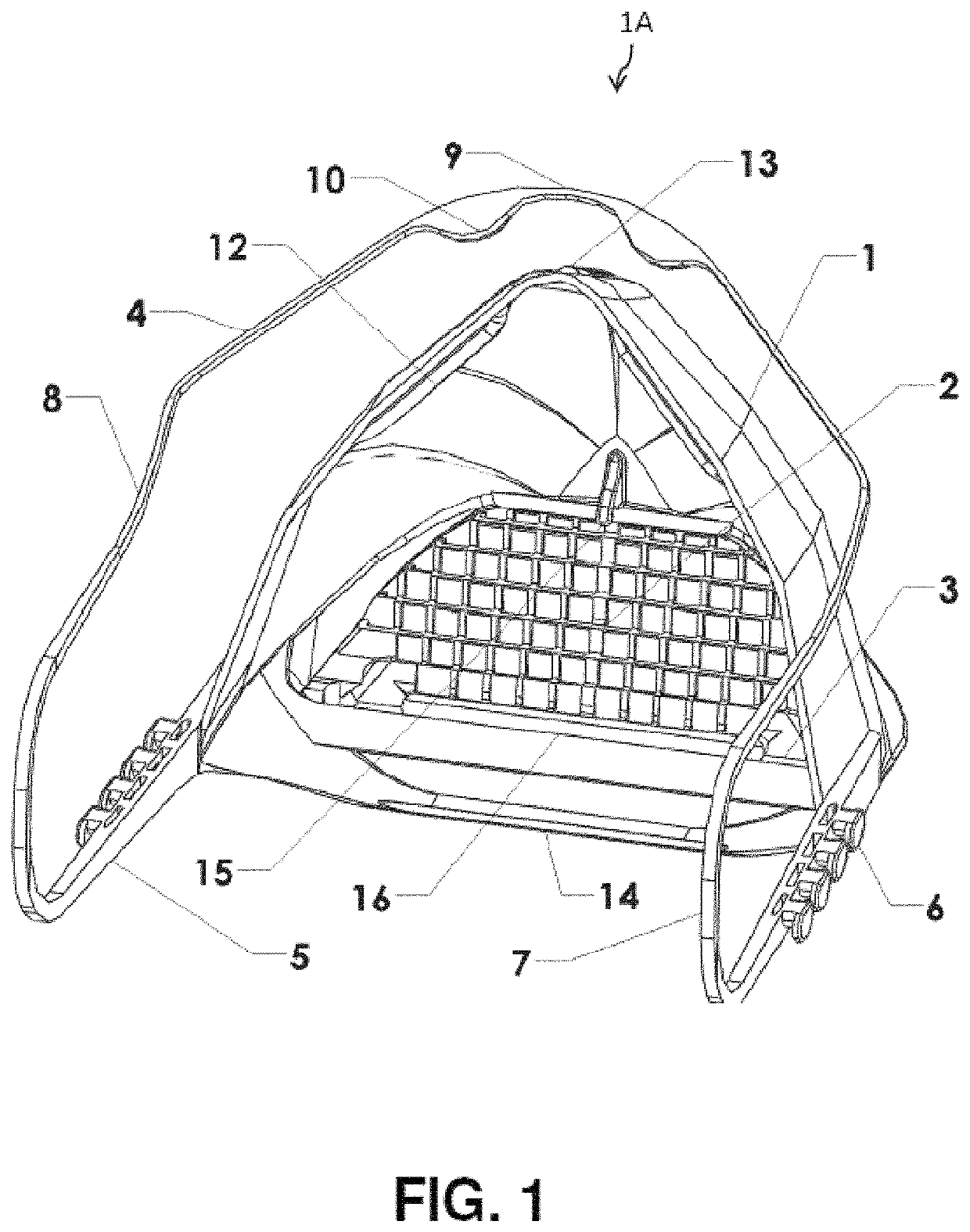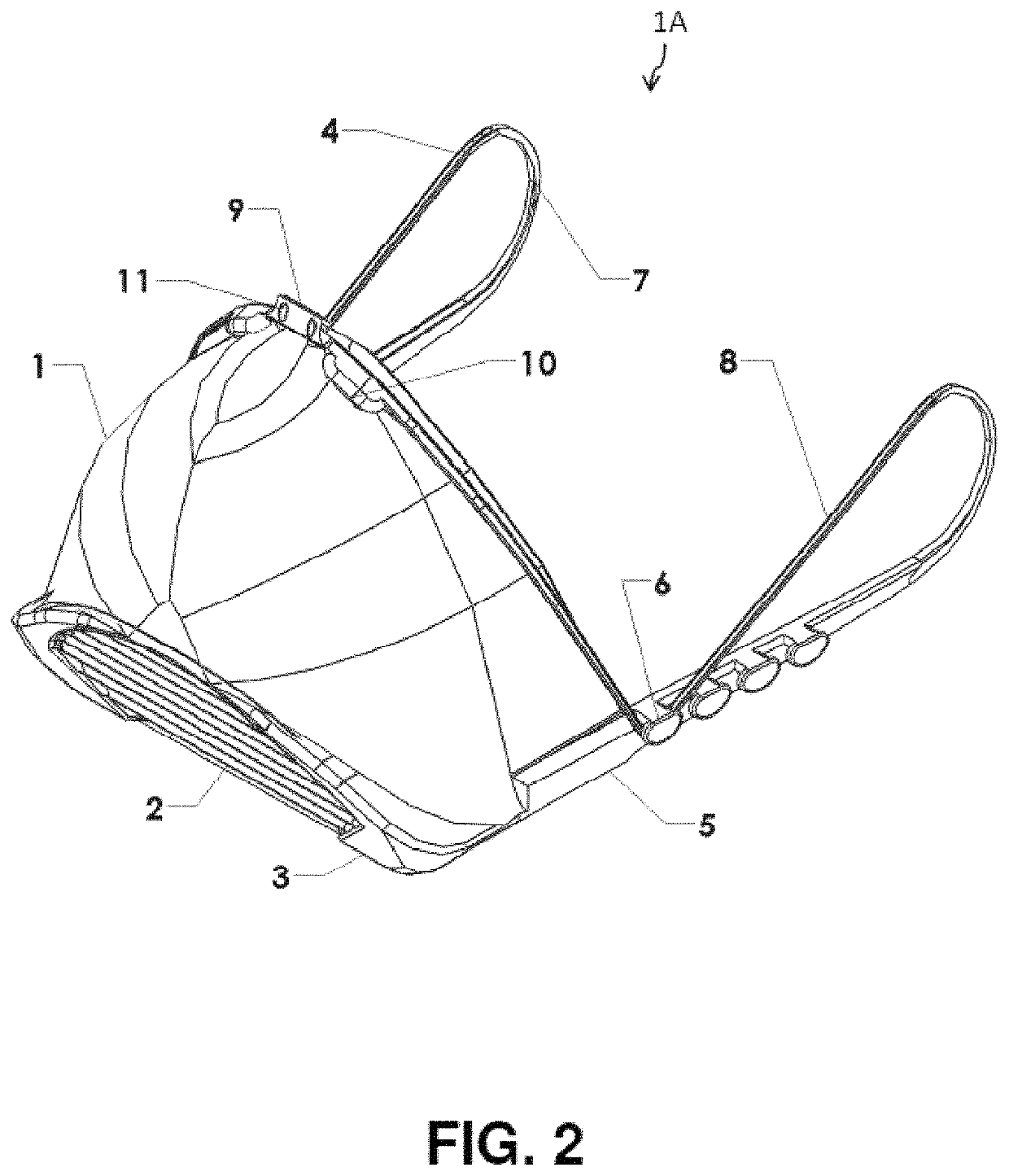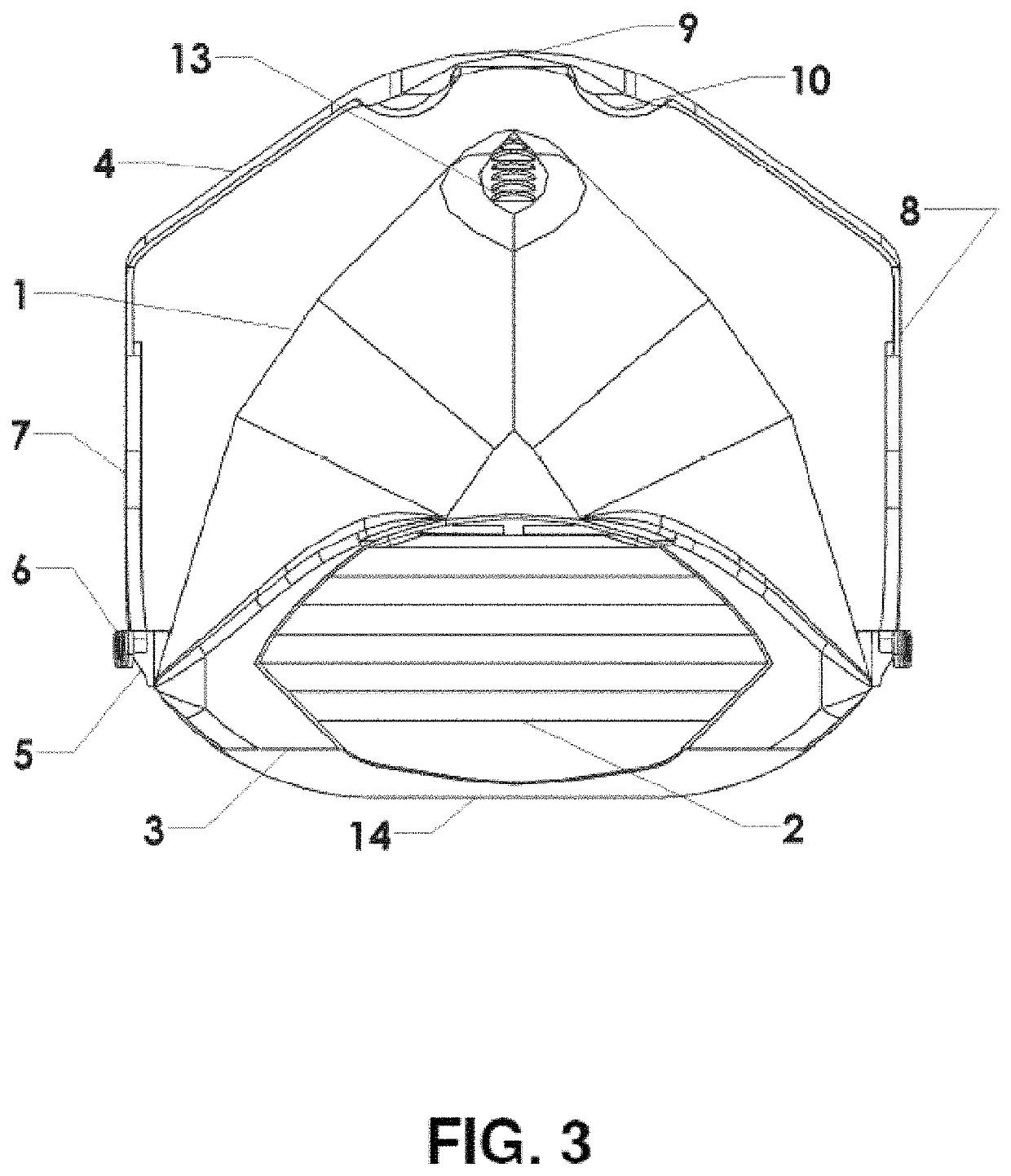Facemask with filter insert for protection against airborne pathogens
- Summary
- Abstract
- Description
- Claims
- Application Information
AI Technical Summary
Benefits of technology
Problems solved by technology
Method used
Image
Examples
Embodiment Construction
)
[0162]As used herein “elastic” is intended to mean the state or quality of being elastic, flexible, resilient and / or adaptable.
[0163]As used herein “oblique” is intended to mean the state of being neither perpendicular nor parallel to a given line or surface; slanting; sloping.
[0164]As used herein “additive manufacturing” is intended to mean a process of making a three-dimensional solid object of virtually any shape from a digital model.
[0165]As used herein “diaphragm” is intended to mean a thin disk that vibrates when receiving or producing sound waves, as in a telephone, microphone, speaker or the like.
[0166]When describing elements of FIGS. 1-11, the same number is used to identify elements that are the same or substantially similar to each other in the different views illustrated in FIGS. 1-11.
[0167]Turning first to FIGS. 1 and 2, illustrating facemask assembly 1A, elastic facemask 1 has a plurality of air channels 2 and side vents 3 formed therein for directing exhaled air flo...
PUM
| Property | Measurement | Unit |
|---|---|---|
| temperature | aaaaa | aaaaa |
| angle | aaaaa | aaaaa |
| temperatures | aaaaa | aaaaa |
Abstract
Description
Claims
Application Information
 Login to View More
Login to View More - R&D
- Intellectual Property
- Life Sciences
- Materials
- Tech Scout
- Unparalleled Data Quality
- Higher Quality Content
- 60% Fewer Hallucinations
Browse by: Latest US Patents, China's latest patents, Technical Efficacy Thesaurus, Application Domain, Technology Topic, Popular Technical Reports.
© 2025 PatSnap. All rights reserved.Legal|Privacy policy|Modern Slavery Act Transparency Statement|Sitemap|About US| Contact US: help@patsnap.com



